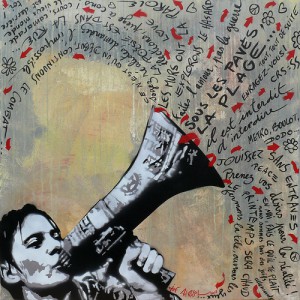Review of the book by Irina Morozova “Composing slogans”
I highly recommend this book to beginners and practicing copywriters. Tips, examples – everything is backed up by statistics and analysis. I would say a fundamental book.
I’ll go over the key points and some of my comments.
What must be included in a slogan? Main significant units: unique selling proposition (USP), brand name. Minimum minimum. But, like everywhere else, there are exceptions.
For example, the inclusion of a brand in a slogan depends on the purpose of the company, the novelty of the brand, etc. Please note that the brand name must be a full member of the slogan (removing it loses the meaning of the sentence), and not a “free radical”.
Sometimes a product is completely indistinguishable from analogues. Then we make the USP from one standard characteristic or build it on emotions.
Additional marketing value is created by mentioning the product category. This can be done nominatively (for example, “Only real chocolate can bear the Cadbury name”) or contextually (describe the context in which the product is used) (for example, “Products choose Stinol”).
Mentioning the target audience can also be nominative (“The new generation chooses Pepsi”) and contextual (“RC-Kola: who doesn’t know, he rests!”).
What should a good sloganist have?
Developed imaginative thinking, talent, the ability to see the most ordinary things outside the box. But although the successful form of presenting the slogan is an important and indispensable condition for the success of an advertising phrase, it still plays a subordinate role before the content.
Artistic techniques of Russian sloganism
1. Consonance (“Your pussy would buy Whiskas”).
2. Rhythm (Toothbrush “Colgate – Zigzag”: Cleans deeper. Cleans better).
3. Rhyme (Milk is doubly tastier if it’s Milky Way).
4. Vocabulary:
- the presence of a verb significantly improves the effectiveness of the slogan;
- we use “strong” concrete words, we avoid “weak” abstract ones.
5. The stylistic affiliation of the words (“Weakly overturn?” from the vodka slogan “Dynasty”).
6. Word creation (“Crush oranges: find out for yourself!” from the Crash lemonade advertising campaign).
7. Play on words:
- a pun (the slogan of the Steilmann fashion collection: “Sits and walks”);
- matryoshka words (Fanta’s advertisement: “New FANTASTIC bottle”)
- use of fixed expressions. There are two options: a paraphrase (Cars “Volvo”: “Free – Volvo”) and pure phraseology (mosquito repellent “Autan”: “A mosquito will not undermine the nose”).
8. Phraseology inside out (Dry cream “Completa”: Cream of society).
9. Symmetry (washing powder “Tide”: “Purity – pure Tide”).
10. Open constructions (Vermouth “Satrap”: Bolder …)
In one slogan, you need to use one artistic technique.
Two rules for adapting foreign slogans:
- Don’t translate, paraphrase
- Don’t Copy, Interpret
I especially enjoyed reading the chapter “Copywriter’s Lab”. Irina describes all the steps to create a slogan: from getting an assignment to handing in the work. A very useful technique with all the tools of a sloganist.
Internet marketing expert. Head of marketing agency MAVR.
Business degree “Master of Business Administration” (MBA).


